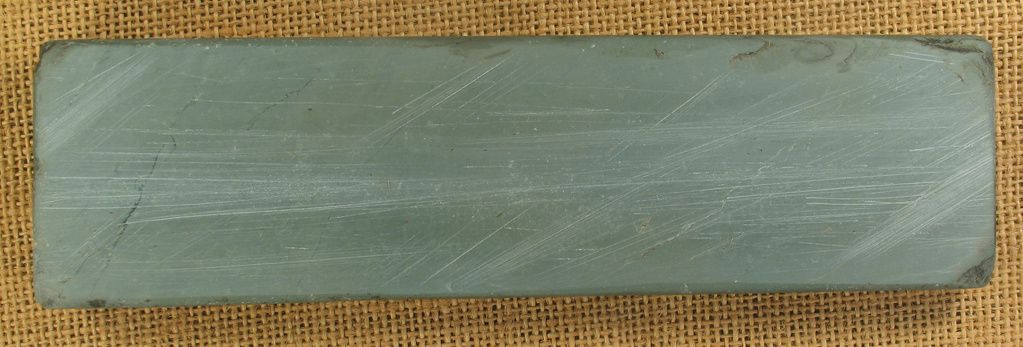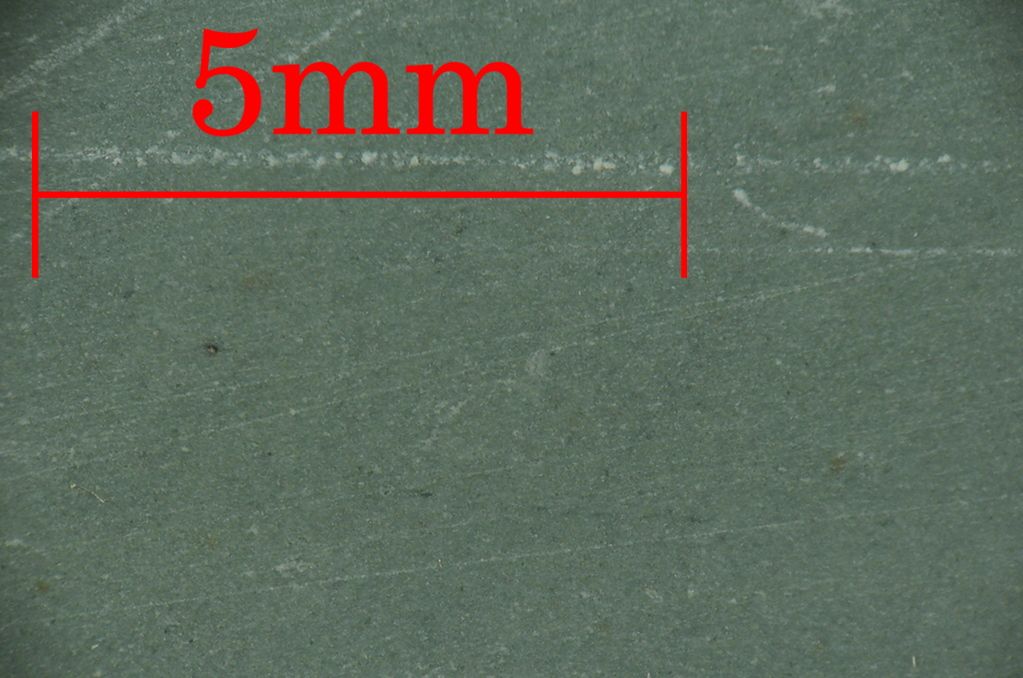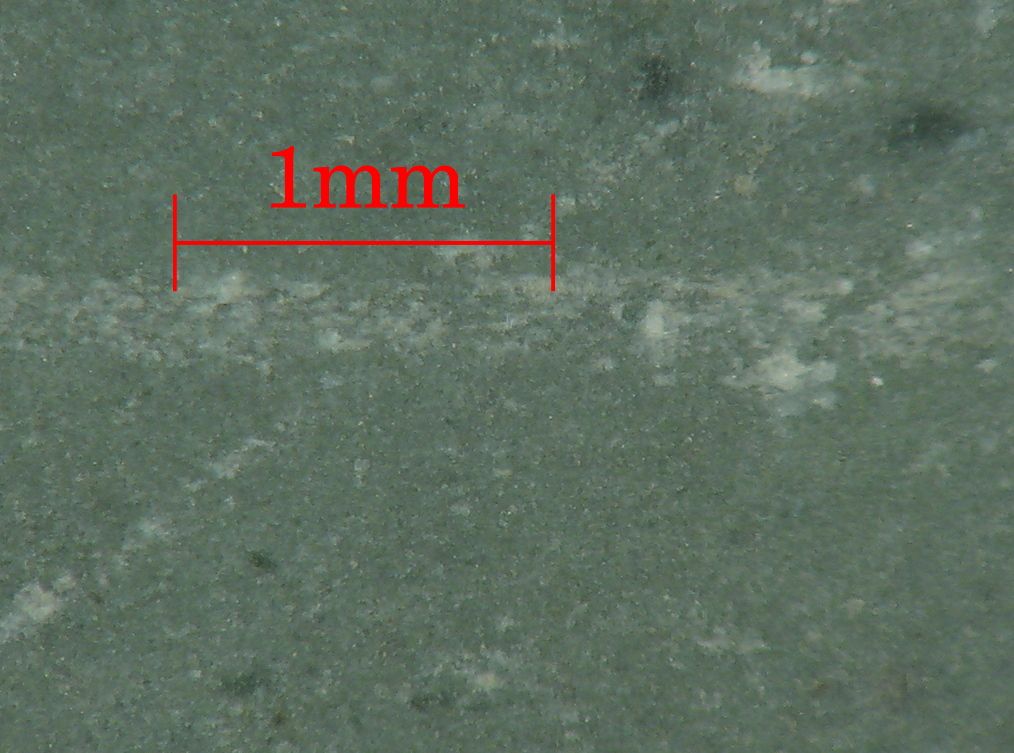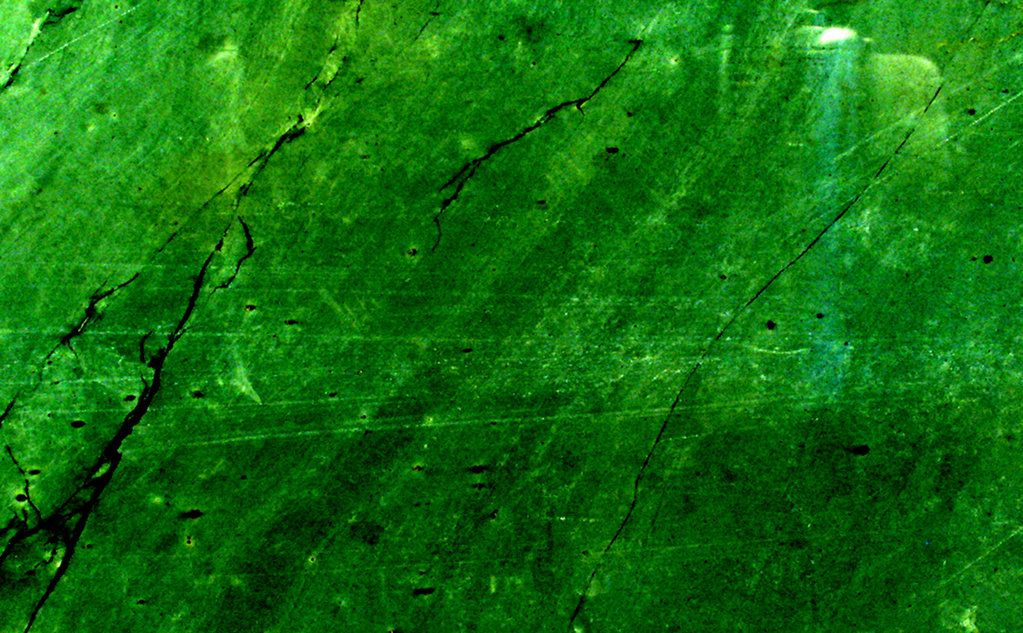Results 1 to 10 of 37
Thread: Green Hone ID - meta question
-
08-27-2013, 04:26 PM #1Junior Member

- Join Date
- Aug 2013
- Location
- Norfolk, England
- Posts
- 20
Thanked: 0 Green Hone ID - meta question
Green Hone ID - meta question
Hello to the group; I've registered here because there seems to be more natural hone ID'ing expertise here than on the woodwork forums I normally frequent.
I've just bought a stone I don't recognise, and I'd like the forums help in ID'ing it.
Question; what information will help you to help me?
Photographs seem an obvious start - any requirments on colour correction/what light to use/white balance?
I can describe how the stone feels when sharpening woodworking tools, but I've never honed a straight razor.
I have lapped the stone flat (on the flattest of it's two sides) - I have NOT used oil on this fresh face yet, since I understand that in razor circles, water is commonly used, and oil considered to preclude subsequent water use (or at least make it tricky).
Here's a thread (on a woodwork forum) where I attempted to ID another stone, including photographs, to give you some idea of how competent/knowledgeable/ignorant I am:
OldTools Archive -- thread with message 239013
(I also own a copy of "Natural 19th and Early 20th Century Sharpening Stones and Hones" by Brian Read and Doug Morgan from TATHS)
But I'm willing to learn...
BugBear
-
08-27-2013, 09:30 PM #2Senior Member

- Join Date
- Mar 2009
- Posts
- 1,211
Thanked: 202
Hi. Pictures help in first place. I tried to open your link but failed to see any pictures. If possible before and after lapping. Size, where did you get it from, smell, colour of slurry, was it harder to lap that other hones known to you, any faults also how does it behave with quality steel. Mind you the best is to have the hone tested by somebody who knows but even that will not guarantie
As for the book I was lucky enough to handle most of the hones which were pictured in the book but have to say that to me some of them looked differently in flesh than in the book. Otherwise the book is very good for scientific research.
-
08-27-2013, 09:54 PM #3
-
08-27-2013, 10:03 PM #4There is no charge for Awesomeness



- Join Date
- Aug 2006
- Location
- Maleny, Australia
- Posts
- 7,977
- Blog Entries
- 3
Thanked: 1587
Just send it to me and I'll ID it for you.
James.<This signature intentionally left blank>
-
08-28-2013, 02:08 AM #5
-
08-28-2013, 07:51 AM #6Junior Member

- Join Date
- Aug 2013
- Location
- Norfolk, England
- Posts
- 20
Thanked: 0
-
08-28-2013, 09:01 AM #7Junior Member

- Join Date
- Aug 2013
- Location
- Norfolk, England
- Posts
- 20
Thanked: 0 Stone ID
Stone ID
OK. Basic description; the stone is 7 1/2" long, 2" wide, and only 1/2" thick. It had been used as a woodworking hone with oil on both faces.
Lapping one face on 40 grit, it was one of the softest stones I have ever worked - copious dust came of with each stroke.
Working an old, hard steel, chisel on the freshly lapped surface, using water as a lubricant, the cutting action was extremely slow, and the resulting surface highly polished.
The stone is a very uniform green (which is what made me think it might NOT be Charnley forest).
The following pictures were all taken under mainly tungsten light (4 angle poise lamps), in an East facing room in the evening, with the camera having a custom white balance set against a white card before each shot. The barrel distortion from using my zoom lens at its widest setting has been removed.
The closeups were done with a normal camera lens reversed on as a closeup adapter (using 45mm and 28 mm), like this:
http://www.photomacrography.net/foru...ghlight=#56547
Basic dry shot:

Wetted:

Close up (dry):

Very close up (dry):

Having noted "some" structure in the stone in the wet shot, I have (very much) exaggerated it here; the colours are (of course) no longer accurate, but I hope the shapes are helpful (sorry about the reflection of the camera)

So - what is it?
BugBearLast edited by bugbear; 08-28-2013 at 10:18 AM. Reason: externally hosted, larger, pictures
-
08-28-2013, 05:09 PM #8

Finally some pics

From the first 2 pics I would expect it to be a Charnley Forest.
The last 3 pictures aren't that useful although close-ups can be interesting to see. Perpective views are useful for natural hones, because some hones have a natural shape while others are cut in (a rectangular) shape. Also sawmarks can helps identify hones.
-
08-28-2013, 07:56 PM #9Senior Member

- Join Date
- Mar 2009
- Posts
- 1,211
Thanked: 202
From first 2 pictures and description I am between CF and LI. As so far I did not have in my hand soft ish CF and from those pictures they are close.
Can you say apart from smelling of oil try to wet it with water after you degreased it properly. If it is any of those two above it should not be a problem as they are not porous. Can you describe the smell when it is wet after few hard strokes with pad of your thumb on it? Do you have pictures from side? Any close up of unusual faults as flakes, odd cracks etc?
-
08-29-2013, 08:57 AM #10Junior Member

- Join Date
- Aug 2013
- Location
- Norfolk, England
- Posts
- 20
Thanked: 0


 14Likes
14Likes LinkBack URL
LinkBack URL About LinkBacks
About LinkBacks






 Reply With Quote
Reply With Quote


